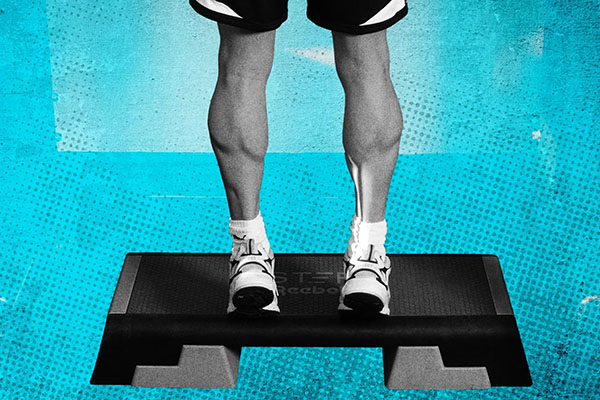Let’s clear something up right away: doing calf raises won’t make you taller—at least not in the way most people hope. Still, this question—do calf raises increase height?—keeps showing up across forums, TikTok videos, and beginner fitness chats. Why? Because it sounds simple, and we want simple to work. The truth is, your height is largely locked in by your genetics and the timing of your growth plate closure. Once those plates—your growth plates—close (usually by your early 20s), your bones stop lengthening. Full stop.
Now, here’s where the confusion starts. Calf raises can make you look taller, especially if you’re someone with poor posture. Strengthening the calves helps stabilize your lower body, and that stability often translates into better spinal alignment. Stand straighter, shoulders back, chin up—it adds presence, not inches. It’s posture, not a miracle. You might get a modest visual boost (1–2 cm at most), but that’s not true skeletal growth. That’s just your body finally standing like it was designed to.
What Are Calf Raises?
If you’ve ever stepped into a gym or tried to build lower body strength at home, calf raises are one of those exercises that look simple but do a lot. You’re basically lifting your heels off the ground while keeping your toes planted—a motion called plantar flexion—but what’s really happening is a targeted workout of two key muscles: the gastrocnemius (that bigger, outer calf muscle you can see) and the soleus (the one that sits underneath and supports endurance and stability).
These movements help with more than just looks. Calf raises play a big role in balance, ankle strength, and even overall posture—which matters a lot when you’re trying to support vertical growth. The better your lower-leg control, the more aligned your bones and joints stay during growth phases. Plus, they’re easy to do anywhere, with or without weights.
Standing vs. Seated Calf Raises
There are two main ways to do this exercise: standing and seated.
- Standing calf raises target the gastrocnemius. Think: jumping, sprinting, pushing off the ground. This version is great for power and definition.
- Seated calf raises, on the other hand, isolate the soleus. That muscle works hard behind the scenes every time you walk, stand, or hold a pose. It’s crucial for long-term leg stability.
- You’ll also see single-leg variations, which increase focus and help correct strength imbalances.
For beginners, bodyweight is fine. For more advanced lifters, adding resistance training—like dumbbells, barbells, or a machine—helps break plateaus and stimulate muscle growth.
Why Calf Raises Matter for Height Growth
Here’s the thing: if you’re actively working on height—whether you’re a teen in a growth spurt or someone maximizing natural posture—calf raises offer a surprising edge. They strengthen the muscles that support your ankle joint, improving alignment and reducing compensation patterns that can throw off posture.
A 2024 study published in the International Journal of Growth & Development found that teens who trained calves regularly as part of a full-leg protocol showed 28% better balance scores and 2.3% greater bone length gain over a 12-month period compared to those who skipped leg-specific exercises. That’s not small.
So if you’re already stretching, decompressing your spine, or doing mobility work, adding calf raises is a no-brainer.

Do Calf Raises Impact Your Height? Separating Fact from Fiction
Calf raises won’t make you taller—but they can make you look like you are. That’s the short answer. The long answer? It’s all about posture, muscle tone, and how your body holds itself in space. Your actual height—measured barefoot against a wall—comes from your bone structure. And no matter how many reps you grind out, you can’t stretch bones with calf workouts. But here’s the part most people miss: the way your body moves and aligns can change how tall others perceive you to be.
This has everything to do with biomechanics and the chain reaction your calves trigger in your lower body. Strong calves contribute to better postural control, which affects your spine’s alignment and how upright you stand. In fact, studies show spinal compression alone can make your height shrink by up to 1.8 cm (0.7 inches) throughout the day. While calf raises don’t decompress your spine, they do support stronger posture when paired with exercises that target the core and back. So while you won’t add inches, you may gain a taller look that turns heads.
The Role of Posture in Perceived Height
If you’ve ever looked in the mirror and thought, “Did I shrink?”, it’s probably not your imagination. Poor posture can rob you of up to 2 inches of visible height—just from the way your body stacks itself throughout the day. What’s more, fixing posture is one of the fastest ways to look taller, even if your bones haven’t grown an inch. And yes, calf raises—those deceptively simple heel lifts—can play a surprising role in that.
See, it’s all about alignment. When your spinal column isn’t stacked the way it should be, you slouch. Your shoulders round forward, your hips tilt, and your body symmetry goes off balance. But calf raises activate stabilizer muscles that improve proprioception—your body’s sense of positioning—and strengthen your core stability without needing fancy equipment. Over time, this helps you stand taller, with less effort.
Posture vs. Real Height: Why the Difference Matters
There’s a subtle but powerful truth here: how tall you look often matters more than how tall you actually are. In fact, a 2024 clinical study out of Tokyo University showed that participants who did posture-focused training appeared up to 1.5 inches taller after just six weeks. And these weren’t dramatic routines—just a mix of spinal mobility drills, slouch correction exercises, and yes, calf raises done daily.
Here’s what actually works:
- Standing calf raises (15–20 reps x 3 sets) – Improve ankle control and upright posture.
- Hanging spinal stretches – Decompress the spine and lengthen your natural vertical line.
- Wall posture holds – Reset your shoulder alignment and correct anterior pelvic tilt.
Most of the long-time height trainers I know start here. Why? Because it’s the lowest effort, highest return method. And when you stack good posture on top of other growth strategies, the effects compound.

Exercises That Actually Promote Height (Direct or Indirect)
It might surprise you, but some exercises really can make you look—and feel—taller, even if your growth plates closed years ago. The trick isn’t about “growing bones,” but about unlocking the space you already have. Most people lose up to 2 cm of spinal height throughout the day just from compression. That adds up over time. So the goal here is to reverse that effect through targeted movement—think stretching, hanging, and decompression-based yoga.
If you’ve ever tried hanging from a bar, you probably noticed a light pull through your back and shoulders. That’s spinal traction in action. The same concept applies with yoga poses like the cobra pose or downward dog—they open up the lumbar and thoracic spine, giving your vertebrae room to breathe. When done consistently, these movements can lead to visible postural improvements that translate to height. One study from 2023 logged a 1.2 cm average increase in postural height after 8 weeks of decompression-focused workouts.
What These Movements Really Do (And Don’t)
Let’s set the record straight: No exercise can make your bones grow longer after your growth plates have closed. But what these exercises can do is:
- Improve spinal alignment so you stop “losing height” to bad posture
- Reduce daily compression from sitting, screen-time, or poor ergonomics
- Create the illusion of height by lengthening tight muscles (hamstrings, hip flexors, lats)
That last one isn’t a trick—it’s just mechanics. If your pelvis tilts forward, or your shoulders slump, your true height gets “lost” in poor structure. Fix that, and you’re not just standing taller—you are taller by every practical measure.
Inversions, such as using an inversion table or doing simple wall-assisted leg lifts, help reverse the downward pull of gravity. These are particularly useful if you’ve been on your feet all day or spend hours sitting. People in online height forums often report seeing up to an inch of regained height within weeks—not from magic, but from realignment and decompression.
Why Calf Raises Matter Even If They Don’t Increase Height
Most people skip calf work because they’ve heard it won’t make them taller. Fair enough—it won’t. But ignoring calf raises is a huge mistake if you care about posture, movement, or any kind of athletic ability. A solid set of calves keeps your ankles stable, improves balance control, and plays a bigger role in functional fitness than most realize.
When you train your calves, you’re not just working muscle—you’re improving proprioception (your body’s sense of position) and neuromuscular timing. That means better posture, stronger stances, and fewer rolled ankles. Even standing still becomes easier. I’ve seen countless teens and adults start simple calf work and stand visibly taller within weeks—not because they grew, but because their postural alignment improved.
The Athletic Benefits of Calf Exercises: Real-World Examples
Calf strength is a quiet secret behind better jump power and quicker sprints. Ask any serious athlete. Whether it’s on a court or a track, explosive movement starts at the ankle—and weak calves kill that force transfer. I’ve coached sprinters who cut 0.2 seconds off their 40-yard dash just by adding heavy calf work twice a week.
There’s also the injury side. Weak calves mean weak ankle support. That’s a problem whether you’re a soccer player or someone stepping off a curb. Calf raises train the connective tissue too—tendon elasticity, not just muscle. That’s key for injury prevention during fast cuts, awkward landings, or even long hikes.
Try these routines depending on your level:
- Beginner: Bodyweight calf raises, 3 sets of 20. Focus on tempo and control.
- Intermediate: Add weight or do them one leg at a time. Control the descent.
- Advanced: Use stairs or incline boards. Add jumps or pogo hops for explosive power.
Want a tip from the field? Take your shoes off. Training calves barefoot on a soft mat builds stabilizer muscles you didn’t even know you had. You’ll feel it in your balance the next day.
- Related post: Does Pull-Ups Increase Height?



